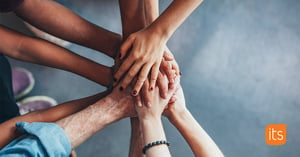Education is a human right. Inclusive and Equitable quality education for all children enables achieving sustainable development. As we celebrate the United Nations International Women’s Day, the concern to ensure equal access to education is more pressing than ever. Education and learning are needed to solve global challenges such as inequality, the climate crisis, and disruption of democracy.
At Sanoma Learning, we work with students and teachers every day, serving over 25 million K12 students with learning products and services in 12 countries throughout Europe. Together with teachers, we co-create inclusive and motivating printed and digital learning materials that fit the local curriculum. Our learning solutions support diversity, accessibility and differentiation.
During the recent years, a strong focus has been put on making learning solutions more inclusive and ensuring every student recognizes themselves in learning materials, which in turn enhances motivation and improves learning outcomes. To drive this, authors of learning materials must be trained to use gender-neutral language and to recognize the unconscious biases each and every one of us has. These may be for example around appearance, age, religion, sexual orientation, family type, gender, and ethnicity, and should be taken into account when creating learning content.
External audits on the inclusion of learning materials can also be conducted. For example, in Finland, our local learning company Sanoma Pro recently hosted an external evaluation of our blended learning material on natural science for primary education – this evaluation focused on topics like equality, non-discrimination and diversity.
Inclusion is an umbrella term also encompassing the topic of accessibility. Digital platforms must be usable by a wide range of people with disabilities; however, everyone is seen to benefit from more accessible content. Printed learning materials can also be enhanced with a wide variety of digital learning assets to increase learning impact among all students and address barriers to learning through traditional formats. For example, the barriers text-based materials can present for some students may be overcome by an application that provides audio learning content for those who learn better by listening than by reading. The learning platform itslearning, which is also in the Sanoma family, follows the international guidelines for accessibility on websites – WCAG 2.1. Platform users can, for example, navigate with a keyboard instead of a computer mouse and it is possible to use a screen reader.
Inclusive learning means differentiation and personalization to support each student on their individual learning path. Because of the increasing attention on inclusion, children with special needs attend regular mainstream classrooms more often, for example. Special needs refer to deficits of varying intensity and nature, such as speech disorders, dyslexia, the Autism Spectrum or concentration deficits.
The demand for learning materials for children with special needs must be met, and teachers require support in Integrating different types of learners to the classroom. For example, in Poland, around 35% of school-aged children are estimated to have special educational needs, with the majority of these children attending mainstream schools. According to the latest research, as many as 75% of children in the first grades of primary school require speech therapy due to speech and communication disorders. As a response, our Polish learning company Nowa Era has designed a product portfolio of learning materials for special needs.
Learning materials also play an important role in solving current global challenges, as they empower teachers and students in making change happen. For example, one of our most recent learning solutions for primary education, World Makers by our Spanish learning company Santillana, is built to support the implementation of the UN Sustainable Development Goals (SDGs) in schools and focuses on collaboration, diversity, inclusion and democracy . A similar material for secondary education offers Spanish teachers tools and materials to Empower students to act towards achieving the SDGs, especially SDG 13 Climate change.
As Nelson Mandela once said: “Education is the most powerful weapon which you can use to change the world”. Let’s use this weapon wisely and ensure equal and high-quality learning opportunities for all.
Sanoma is a learning and media company operating in twelve European countries and employing more than 5,000 professionals. Building inclusive learning solutions is one of the six main topics of our Sanoma Sustainability Strategy.
